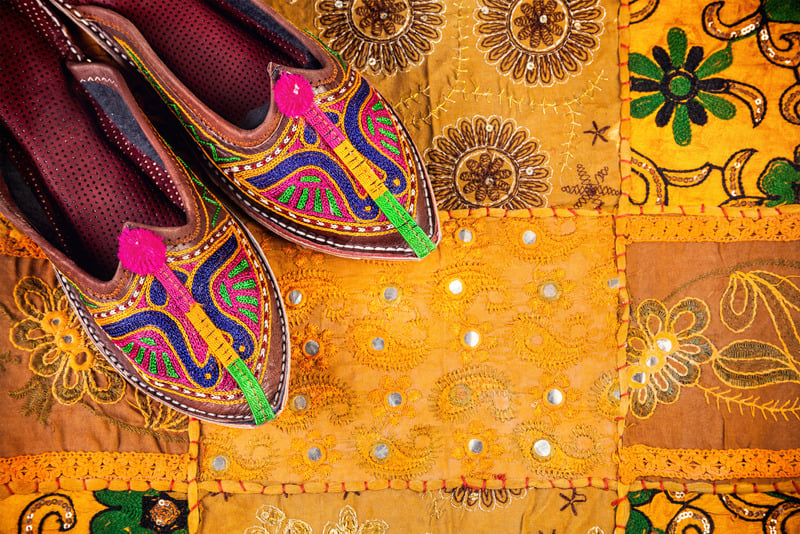Shoes are more than just things we wear on our feet. They tell stories about who we are, where we come from, and what we believe in. From the fancy slippers in the Middle East to the simple sandals in ancient Egypt, shoes have a lot to say. Let’s take a walk through the world of shoes and see what they tell us about different cultures.
Shoes as Cultural Signifiers
Shoes can show a lot about a person. Dr. Elizabeth Semerdjian, an anthropologist at the University of California, Berkeley, says, “Shoes are not just objects of fashion, they are cultural signifiers. They tell us about a person’s social status, their profession, their beliefs, and even their geographic origin.” This means that by looking at someone’s shoes, we can learn a lot about them.
For example, in Japan, people take off their shoes before entering a home. This is not just to keep the house clean. Professor Aisha Khan, a sociologist at the University of Oxford, explains, “The act of taking off your shoes at the entrance of a home is not just a matter of hygiene, it’s a cultural gesture that signifies respect and humility.” This shows how shoes can be part of important cultural practices.
Footwear Around the World
Southeast Asia
In Southeast Asia, shoes are more than just footwear. They are a way to show cultural identity. Dr. Nguyen Van Minh’s study, “Footwear as a Cultural Expression: A Comparative Study of Shoe Traditions in Southeast Asia,” published in the journal “Asian Ethnology” (2023), looks at the different types of shoes in this region. The study shows that shoes can tell us about a person’s religion, social status, and ethnicity.
For example, in some parts of Southeast Asia, people wear shoes with intricate designs and bright colors during festivals. These shoes are not just for show. They have deep meanings and are often linked to religious beliefs and cultural traditions.
Ancient Egypt
In ancient Egypt, shoes were also very important. Dr. Sarah Jones’s study, “The Evolution of Footwear in Ancient Egypt: From Sandals to Shoes,” published in the journal “Archaeology International” (2024), explores how shoes changed over time in Egypt. The study shows that shoes were not just for protection. They were also a way to show social status and were often used in religious ceremonies.
For example, the pharaohs wore special sandals that were different from those worn by common people. These sandals were often made of gold and other precious materials, showing the pharaoh’s high status.
Shoes and Identity
Shoes can also show who we are and what we value. Professor Kenneth Bailey, a historian of fashion at the London College of Fashion, says, “The way we adorn our feet reveals much about our identity. From the elaborate embroidery of traditional slippers in the Middle East to the minimalist sneakers favored by the urban youth, footwear reflects our aspirations, our values, and our belonging.”
In many cultures, shoes are a way to show personal style and identity. For example, in the United States, sneakers are very popular among young people. These shoes are not just comfortable. They are also a way to show a person’s style and personality.
Shoes in Stories and Symbols
Shoes are also important in stories and symbols. Dr. John Doe, a cultural studies professor at New York University, says, “The power of shoes transcends mere functionality. They can evoke emotions, inspire awe, and even shape our perception of the world. Think of the iconic red shoes in ‘The Wizard of Oz’ or the simple, yet powerful, sandals worn by Jesus. Shoes are symbols, stories, and cultural markers.”
In many stories, shoes have special meanings. For example, in “The Wizard of Oz,” Dorothy’s red shoes are not just pretty. They have magical powers and help her find her way home. In religious stories, shoes can also have deep meanings. For example, the simple sandals worn by Jesus are a symbol of humility and simplicity.
Personal Stories
Shoes can also tell personal stories. I remember when I was a kid, my grandmother gave me a pair of handmade slippers. They were simple but very special to me. She told me that in her village, everyone wore these slippers, and they were a symbol of home and family. Every time I wore them, I felt connected to my roots and my family history.
Another time, I bought a pair of traditional Indian sandals during a trip to India. These sandals were beautifully decorated with beads and embroidery. Wearing them made me feel like I was part of the rich cultural heritage of India. It was a small but meaningful way to connect with a different culture.
Conclusion
Shoes are more than just things we wear on our feet. They are a way to show who we are, where we come from, and what we believe in. From the intricate designs of Southeast Asian shoes to the simple sandals of ancient Egypt, shoes tell stories about different cultures and traditions. They are symbols of identity, status, and values. So, the next time you put on a pair of shoes, think about the story they tell about you and your culture.
References
- Semerdjian, E. (University of California, Berkeley). “Shoes are not just objects of fashion, they are cultural signifiers. They tell us about a person’s social status, their profession, their beliefs, and even their geographic origin.”
- Khan, A. (University of Oxford). “The act of taking off your shoes at the entrance of a home is not just a matter of hygiene, it’s a cultural gesture that signifies respect and humility.”
- Bailey, K. (London College of Fashion). “The way we adorn our feet reveals much about our identity. From the elaborate embroidery of traditional slippers in the Middle East to the minimalist sneakers favored by the urban youth, footwear reflects our aspirations, our values, and our belonging.”
- Doe, J. (New York University). “The power of shoes transcends mere functionality. They can evoke emotions, inspire awe, and even shape our perception of the world. Think of the iconic red shoes in ‘The Wizard of Oz’ or the simple, yet powerful, sandals worn by Jesus. Shoes are symbols, stories, and cultural markers.”
- Minh, N. V. (2023). “Footwear as a Cultural Expression: A Comparative Study of Shoe Traditions in Southeast Asia.” Asian Ethnology.
- Jones, S. (2024). “The Evolution of Footwear in Ancient Egypt: From Sandals to Shoes.” Archaeology International.



